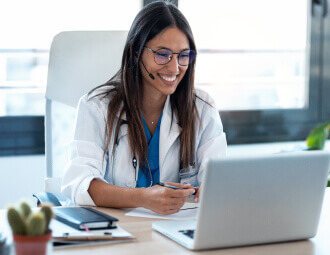Seasonal affective disorder (SAD) is a form of depression that impacts around
So, what is seasonal affective disorder? As it comes from the name, it’s seasonal depression. It may start in the fall months or early winter and end with sunny days in spring or the first months of summer. However, some people may also experience summer SAD.
Not everything is just a winter blues. You should not underestimate the importance of all the symptoms you may have. You can find everything you need to know about SAD and how to treat it in this article.
If you notice sadness or a depressive state in autumn and winter, take a test to know if you have depression.
Seasonal Affective Disorder Symptoms
SAD is classified in the 5th edition of the Diagnostic and Statistical Manual (DSM) as a major depressive disorder that has a seasonal pattern. Therefore in certain seasons, people with SAD experience symptoms of depression, including:
- Feeling sad and depressed most of the day, nearly every day.
- Feeling irritated.
- Lack of interest in your hobbies and favorite activities.
- Feeling worthless or hopeless.
- Having less energy to carry out daily activities.
- Weight issues.
- Lack of concentration.
- Lack of sleep or sleeping too much.
- Suicidal thoughts.
Spring and summer-specific SAD symptoms may include:
- Feeling anxious and restless.
- Insomnia or sleeping fewer hours than usual.
- Weight loss and a change in eating patterns like malnutrition.
SAD symptoms specific for fall and winter may include:
- Low energy levels.
- Longer sleep hours and finding it difficult to wake up in the morning.
- Weight gain and changes in eating patterns, such as overeating and having more carbohydrate cravings.
It is common for some people with bipolar disorder to have episodes of SAD connected to a certain season. Mania or hypomania can happen during spring or summer, and depressive episodes — during fall and winter.
Seasonal depression may require professional help. Take a free test and see a doctor online to receive treatment.
What Can Cause SAD?
The researchers cannot tell for sure which exact factors cause this type of depression. Here are some possible reasons:
- Biological clock. With seasonal changes, the biological clock changes as well. Thus it affects your sleep, mood, and hormones, so your daily routine cannot be the same.
- Chemical imbalance. Your level of serotonin, which gives you a feeling of happiness, may be lower than it should be at specific times of the year. You need sunlight to help manage it; only the situation may not allow it during some seasons. So lack of serotonin can lead to depression.
- Vitamin D deficiency. You need to have enough vitamin D to raise your serotonin level. Vitamin D deficiency often appears when there is not enough sunlight to produce it in our bodies during winter.
- Melatonin boost. One more hormone related to your sleep and mood is melatonin. It can be produced excessively because of a lack of sunlight during the day. It can make you feel inactive and sleepy.
- Stress and anxiety. People diagnosed with SAD have a negative attitude towards the seasons of the year when their behavior changes. It leads to increased anxiety and stress, and It is hard to tell whether it’s a cause or effect of SAD.

Seasonal Affective Disorder Treatment
Some alternative treatments that may be suggested to you by a medical professional:
- Light therapy. Spending time under a special lamp with full-spectrum fluorescent light simulates exposure to sunlight. A
meta-analysis of different clinical trials[2] shows that light therapy is an effective treatment modality for SAD patients. - Medications. Usually, seasonal affective disorder medications include antidepressants, such as selective serotonin reuptake inhibitors (SSRIs), to regulate serotonin activity.
- Cognitive behavioral therapy (CBT). Therapy is an effective way to deal with anxiety and stress and change negative thinking patterns.
- Vitamin D. Supplements containing vitamin D help prevent its deficient levels and improve your symptoms.
And here are some self-help tips you can use to start your recovery:
- Go for walks in daylight to get more sunlight.
- Sit by the windows indoors.
- Do regular physical activity outdoors.
- Eat nutritious and healthy food.
- Reduce your stress level.
As soon as any symptoms start affecting your life, it’s time to get quality treatment.
Summary
All of us feel under the weather from time to time, and it is natural. However, keep an eye on feeling down for a long stretch of time. Finding it harder and harder to do regular everyday activities should be a sign for consulting a specialist in a clinic.
People who are prone to SAD can experience it every year. But there is a way to prevent it or at least ease the symptoms. In case you notice any symptoms of seasonal affective disorder and feel down for a long time, sign up and start by completing our SmartCare symptoms checker.
The best diagnostic approach is a proper clinical interview that you can have at MEDvidi with personal therapist online who can prescribe medications for depression online.












